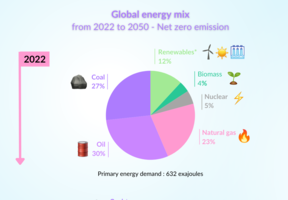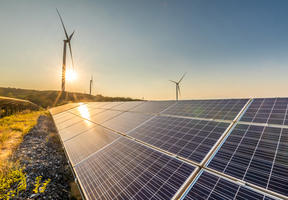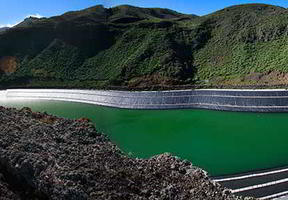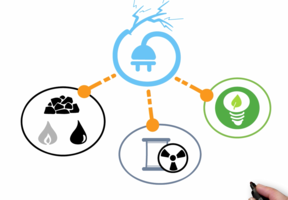Electricity Transmission
5 min read
is transmitted from plants to end consumers via an extensive grid of overhead or underground
lines.
Cables are still the only means of transporting electricity: cables supported by insulators and pylons for overhead lines and insulated and ducted cables for underground lines. Optimizing electricity transmission is a major objective to ensure the success of the
.

© EDF / ROUX LIONEL - Electricity is transmitted over extremely long distances using extra-high voltage power lines. Shown here is the Baixas station, located at the France-Spain interconnection.
Different Categories of Power Lines
After leaving the power plant where it is produced, electricity first flows through the high and extra-high voltage transmission grid (HV/EHV). Most of the power lines are overhead. Though the solution is more expensive, an increasing number of power lines - especially for high voltage - are being buried underground.
The electricity then enters the medium and low voltage distribution grid, which delivers power over shorter distances to end consumers.
A number of components ensure a safe and secure flow of electricity at this point. These include:
- Substations, where incoming high voltage is transformed to a lower voltage for distribution.
- In these substations, circuit breakers protect the grid against overloading due to lightning, a short circuit caused by a tree branch, etc., by interrupting the power supply to certain faulty sections of the power line.
Are High Voltage Power Lines Hazardous?
Electromagnetic fields
High and extra-high voltage power lines create electromagnetic fields (EMF). Extensive research has been carried out, and debates have been held concerning the possible effects on the health of people living near power lines and the environment.
According to the data recorded, electromagnetic fields have no proven harmful impact on people’s health. Some precautionary measures are nonetheless recommended. In France, the magnetic field generated in an area accessible to the public, must not exceed a threshold value of 100 μT (microtesla), the unit in which magnetic field strength is measured. To prevent technological risks, the French electricity transmission grid (RTE), has set up an interactive platform so that everyone can consult the measurements recorded in their region.
RTE has also published a number of booklets, including “10 questions and answers” and “Working with Mayors”.
Electric Arcs
Apart from the electromagnetic fields, care should be taken when approaching a high voltage power line. Even if you do not touch it, being too close can cause an electric arc (also called an ‘arc discharge’) and therefore electrocution. Here is some advice from RTE on the subject.
In France, an app called LigneAlerte, is available for download on smartphones, and sends an alert when you are near an overhead power line. The closer users get to a power line, the stronger the alert (vocal or vibration).






















